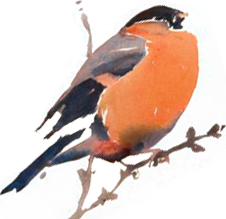SBRC's Aims & Objectives
The areas of Scottish Birds Records Committee’s responsibility can be summarised as:
- Record assessment – examine records of species on the SBRC List and liaise with Local Recorders and Local Records Committees, plus BBRC and BOURC, to ensure that records are adequately assessed prior to publication in the Scottish Birds Records Report, which are published annually in the June issue of Scottish Birds.
- Publication of the same records on the SOC website as soon as they are assessed on the recent SBRC decisions page.
- Publication of Excel files, containing SBRC records of each species, on the SBRC Species Analysis page.
- Maintenance of the Scottish List.
- Production of papers on identification, status etc in a Scottish context, and roles (including co-ordinating others) that are best carried out by a committee rather than by individuals.
- Keeping the Scottish birding community informed about our work, aims and progress.
The SOC’s Council wished to maintain a high standard of accuracy in its annual Scottish Bird Report, thus the Scottish Birds Records Committee (SBRC) was set up in 1984 to ensure that all unusual Scottish records were fully assessed prior to being accepted for publication. SBRC is a sub-committee of the SOC Council.
Since 1984 local bird reports have increased considerably and now cover most of Scotland. It is equally important that these reports are accurate and SBRC has a role in this regard.
With the advent of many excellent Local Records Committees, a three tier system of record assessment was introduced in the early 1990s:
- The British Birds Rarities Committee (BBRC) assesses British rarities (those appearing on the BBRC List).
- SBRC assesses records of birds rare in a Scottish context, but not rare enough in Britain to be assessed by BBRC.
- Local Records Committees assess records of slightly less rare Scottish species, together with all other local rarities.
In the few remaining areas where there are no local committees, SBRC fills this function.
By introducing this system we have a more uniform approach to record assessment, aimed at achieving the aspirations of the SOC Council when they originally set up SBRC.
SBRC publishes a list of birds known as the SBRC List. Birds appearing on this list are not rare enough to appear on the BBRC List, but are unusual enough in a Scottish context to require observations to be supported by written descriptions, which require to be vetted and accepted by a committee. SBRC wish to see records of many of the species on the SBRC List, but records of less rare species on this list are usually adjudicated by Local Records Committees.
Following consultation during 1994, between the Editor of the Scottish Bird Report and SBRC, and after seeking the views of Local Recorders, it was agreed that records of species appearing on the SBRC List would not appear in local bird reports or other SOC publications without being assessed and accepted by either SBRC or a local committee. Similarly records of British rarities are not published unless accepted by BBRC.
Useful Links
- View the Scottish List.
- View the latest SBRC List. Use the drop down menu option to navigate to SBRC lists from previous years.
- Visit the Local Recorder Network homepage, to access individual recording area pages and within, the information regarding species considered locally.
- Read about recent SBRC decisions
- Download the Rare bird record form template.
- Download Excel files, containing SBRC records of each species, from the SBRC Species Analysis page.
Page header image © John Nadin



